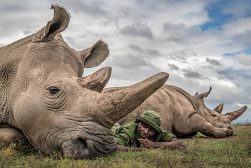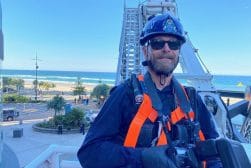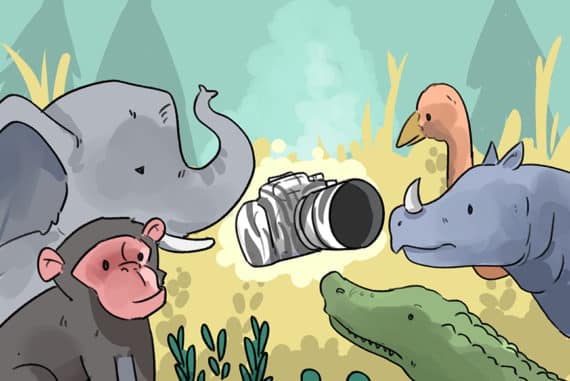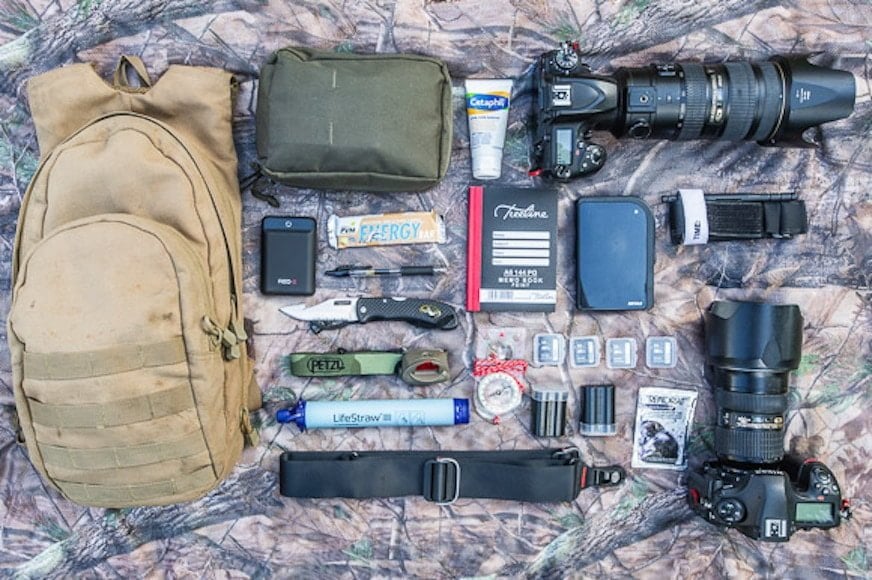
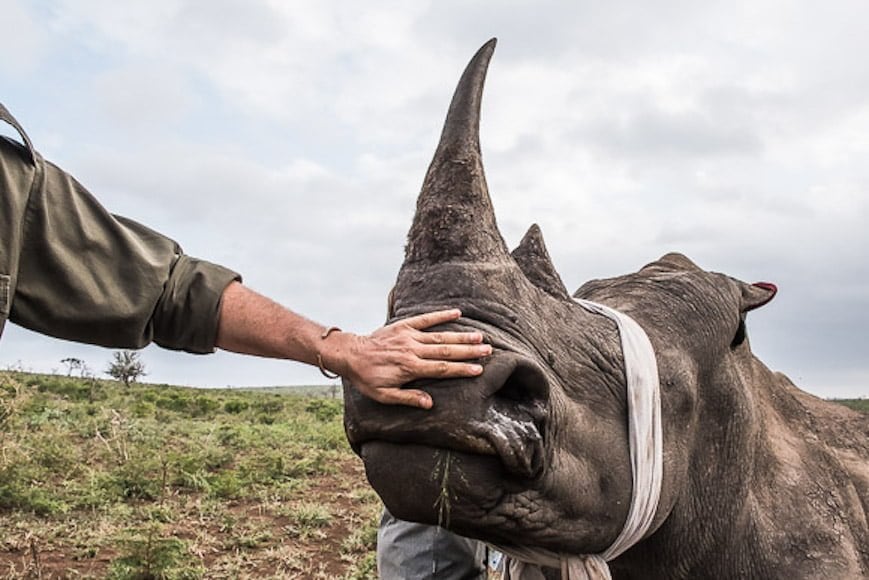
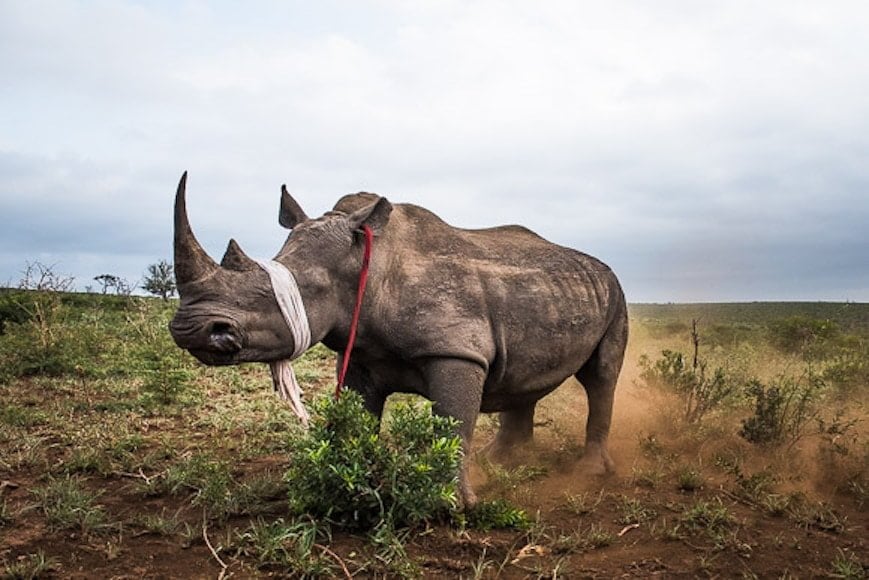



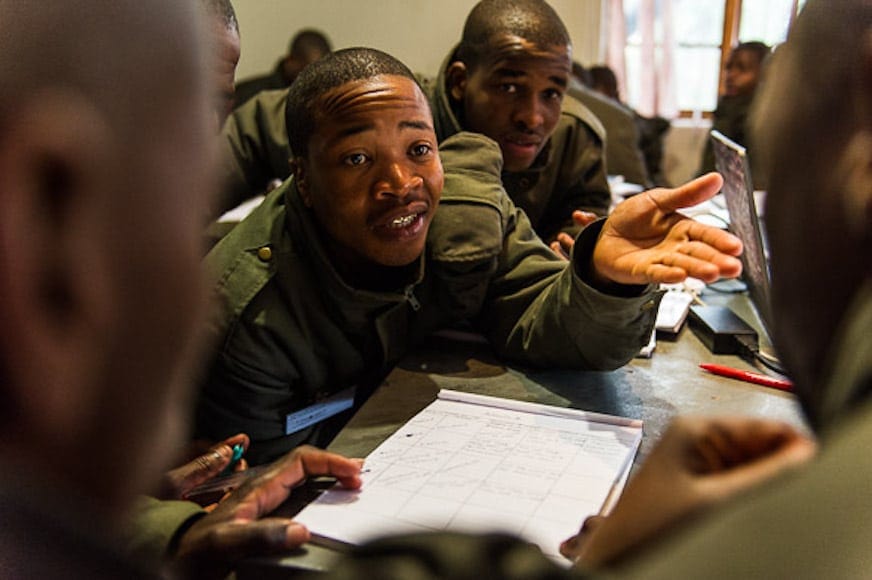

Peter Chadwick
Photojournalism | Last Updated: April 4, 2024
Hi, my name is Peter Chadwick and I have over 30 years of direct conservation experience in Africa where I have been privileged to have managed numerous conservation areas.
I am also an internationally recognized photojournalist and Fellow of the International League of Conservation Photographers and use my photojournalism as part of my conservation toolkit.
Currently, I am undertaking a long-term photojournalism project that documents the negative impacts of organized crime on Africa’s wildlife (particularly on its rhinos and elephants), its conservation areas, and on the ranger teams that are tasked with protecting Africa’s iconic heritage.
These rangers are facing an ever-increasing risk of death and injury and the occurrence of post-traumatic stress disorder through their repeated encounters with well-armed poachers.
I might also add that I mentor and train counter-poaching units in Africa, which therefore gives me a very good understanding of the issue at hand and the environment that I work in. I am using these documented stories and images to raise awareness and garner support for the ranger teams and to try and mobilize support to stop wildlife crime.
It must be remembered that for a conservation area to be able to provide tangible socio-economic and tourism benefits to the wider community, it must be secure from illegal activities and particularly from wildlife crime.
Left unattended, wildlife crime will quickly escalate out of hand and will destroy the very assets that are acting as the baseline of attraction for a viable tourism product that is so important in many areas of rural Africa where few other economic opportunities exist.
In order for me to gather the needed material, I accompany the counter-poaching ranger teams as they undertake their duties and patrols. Some of these patrols may take place in extremely rugged terrain where temperatures will exceed 38°C and where the patrols may cover up to 30 – 40km in a single day.
Over and above this, there is also the constant risk of contracting tropical diseases, getting into contact with heavily armed poaching gangs and encounters with dangerous game such as lion, elephant, and buffalo. Fitness is therefore paramount and gear that is tough and durable while also being compact is vital.
For clothing, I use neutrally colored 5.11 tactical long-sleeved shirts and long pants to protect me from sunburn and cuts. For footwear, I use either flat sole leather boots or 5.11 tactical canvas boots that are light in weight, are water resistant and can also handle the rugged terrain.
All the gear that I need on a patrol must fit snugly to my body so that it does not make a noise or snag onto dense bush as we patrol through it. I therefore mostly use a 10-liter CamelBak with its own built-in three-liter hydration pack to pack loose items in to.
A lightweight wind and rainproof camouflaged jacket and 2x2m camouflaged piece of cloth are folded into the pack and complete my clothing needs. The camouflage cloth sheet can act as a bivy, as a camouflage covering, or be used as a scarf or head covering.
To this CamelBak, I attach an individual first responder field aid kit that has enough contents to deal with most serious injuries likely to be encountered.
The kit includes CAT tourniquets, and a variety of bandages of various sizes to be able to deal with severe wounds and to stop bleeding sufficiently enough to get any patients to emergency aid. A foil space-blanket can be used to cover patients and signal to over-flying aircraft.
For sustenance, I carry a couple of energy protein bars, some dried mango (which is really great for a rapid energy boost!), some dried biltong (jerky), and two rehydrate sachets should I need to replace lost electrolytes.
Other vital pieces of equipment are a Life Straw with which I can drink water directly from any un-purified water source, as it is able to filter out any impurities in the water and it can therefore be a real lifesaver!
Sunscreen, a folding blade pocketknife, a petzel head-torch with red reflective lens to limit light distribution, and an old-fashioned compass make up the rest of my non-camera gear. With this lightweight kit, I can keep going if need be for a 48- to 72-hour period without resupply.
In terms of camera gear, if I am undertaking foot patrols with the rangers, I only carry one Nikon D850 camera with a Nikon 24-70mm f/2.8
lens. This is carried on a Peak Design adjustable sling
.
With this lens, I must get up close to any action, which really helps with getting very striking images that can capture the detail of the emotion and the moment. Both the camera and lens are very hardy to the tough conditions that I work in and are compact enough to be able to tuck neatly into my side while moving through dense vegetation.
I use 32 gig Lexar Professional Memory Cards and carry at least six spare cards on a given patrol. I prefer to use the smaller capacity memory cards as these can be more easily switched out and can be quickly backed up without fear of losing large amounts of images should something happen to a specific card.
I have found that carrying two spare camera batteries is more than sufficient for an extended patrol.
If I am lucky enough to be on a vehicle patrol, I will carry a second Nikon D750 camera body with a 70-200mm f/2.8
lens that is also on a Peak Design adjustable sling
and which has its own set of memory cards and spare batteries.
As soon as I get back from any patrol, I immediately recharge any camera batteries (sometimes having to use a portable power pack – currently a Red E) and download all of my images onto a 13” MacBook Pro that is kept in its own protective Pelican case
.
I then make two separate backups of the images onto LaCie Portable Hard Drives. One of these hard drives is always kept on my person and the other is kept locked in my general luggage which is kept separate from the MacBook.
Three backups may sound excessive, but I have had occasions where hard drives and gear has failed me, or items of my luggage have been stolen.
Lastly, I always carry a notebook and pencil. Prior to any field trip, I always research as much as I can about the location, the situation, the environment, and the teams that I will be working with. This allows me to draft a shot list and I prefer to try and focus on getting specific shots to tell a specific story rather than just hoping for some action that might provide something of interest.
I always keep detailed notes of any field trip and patrol as this helps me with captioning and keywording the images once I get back to my base.
Gear is always something that should be constantly checked and refined and I always clean, repair, and repack immediately on return from any field trip so that I can grab it quickly if needed for the next outing.
www.peterchadwick.co.za | @peterianchadwick

Check out these 8 essential tools to help you succeed as a professional photographer.
Includes limited-time discounts.





